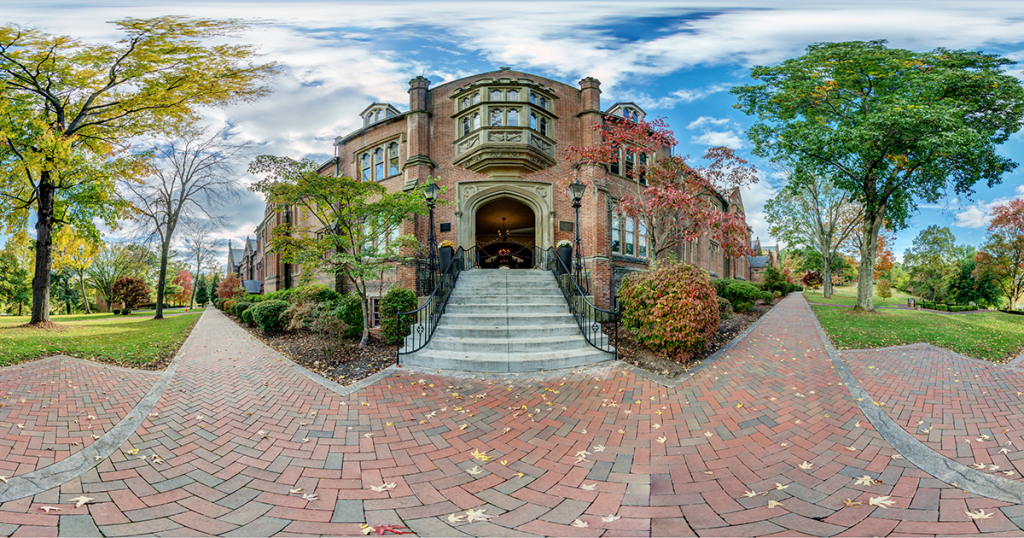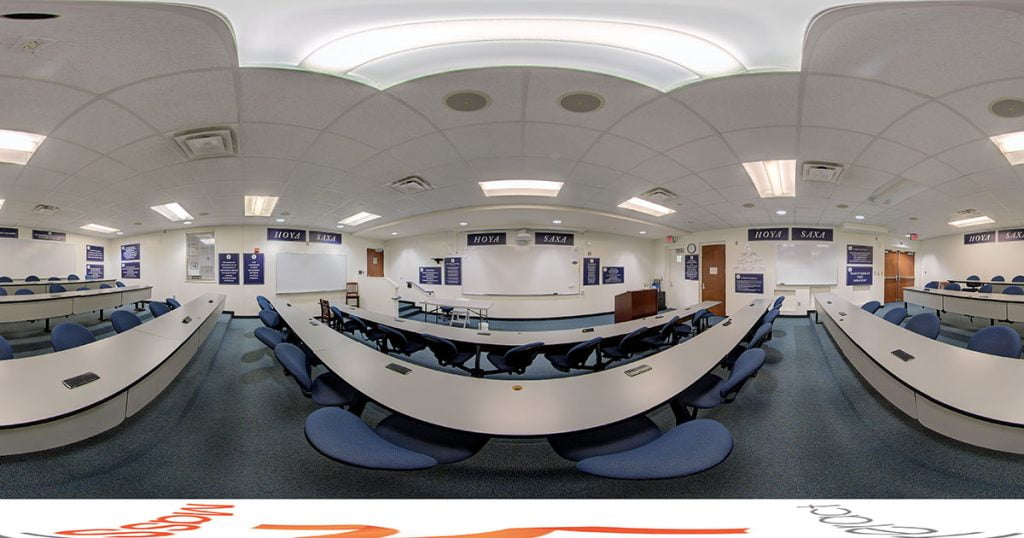The COVID-19 pandemic had a profound impact on the admissions process, particularly for international students seeking to study abroad. Travel restrictions, lockdowns, and safety concerns have made it challenging for prospective students to embark on physical campus visits, hindering their ability to gain firsthand experience of universities before making any decisions. However, universities have responded to this challenge by harnessing the power of 360 degree virtual college tours. These innovative tools utilize advanced technology to provide immersive and interactive experiences, bridging the gap between physical and virtual exploration. By leveraging virtual tours, universities can now attract and engage international students, empowering them to make informed choices and fostering a sense of connection to their prospective institutions, despite the limitations posed by the pandemic. So if you’re also planning on using University Virtual Tours to attract international students, keep reading.
Engaging Students Through Virtual Tours
Virtual tours have revolutionized the way universities engage with prospective international students, offering a captivating and immersive experience that goes beyond static images or brochures. Here are some key aspects of how virtual tours effectively engage students:
Interactive Exploration
Virtual tours provide students with an interactive platform that allows them to explore campuses at their own pace and according to their specific interests. The 360-degree panoramic view and intuitive navigation features enable students to move freely through different areas of the campus, providing a sense of control and personalization. They can zoom in on specific details, pause to read information, and take their time to fully absorb the atmosphere of each location. This interactive exploration fosters a sense of discovery and engagement as students actively participate in their virtual campus visit.
Multimedia Integration
Virtual tours often incorporate various multimedia elements to enhance the overall experience. Students can watch videos that showcase campus life, academic programs, and extracurricular activities. These videos bring the university to life, offering a glimpse into the vibrant community and allowing prospective students to envision themselves as part of it. Additionally, virtual college tours may include audio guides or narrations that provide informative and engaging commentary, highlighting important features and sharing interesting anecdotes. This multimedia integration adds depth and richness to the virtual tour, capturing students’ attention and immersing them in the university’s culture and offerings.
Social Integration and Peer Connection
Students can connect with their peers and the university community before even joining with the help of virtual tours. For example, virtual tours may include embedded social media feeds, giving prospective students a glimpse into student life and allowing them to engage with current students. This peer connection provides valuable insights into the social and cultural aspects of campus, helping international students feel a sense of belonging even before they arrive. By facilitating social interaction and networking opportunities, virtual tours contribute to building a supportive and inclusive community for prospective students.
Personalized Storytelling
Virtual tours can be designed to tell a compelling and personalized story about the university. Through carefully curated narratives, institutions can highlight their unique strengths, achievements, and values. The virtual tour can showcase success stories of alumni, faculty profiles, and student testimonials, providing a human connection that resonates with prospective students. By incorporating personal narratives, universities can create an emotional connection and inspire students to envision themselves as successful members of the academic community.
Gamification and Interactive Challenges
To make the virtual tour experience even more engaging, some universities incorporate gamification elements and interactive challenges into the tour. This approach adds an element of fun and competition, making the exploration process more enjoyable for students. Gamification elements can include quizzes, puzzles, or scavenger hunts that encourage students to actively explore different areas of the campus and discover hidden gems. These interactive challenges not only engage students but also provide an opportunity for them to learn more about the university’s history, traditions, and academic programs.
Also Read: Reasons Why Colleges and Universities Need to Use Virtual Tours
University Virtual Tours Benefits
Wondering why are virtual tours beneficial? Below, we’ve listed down some of the primary ones:
Accessibility and Convenience
One of the key advantages of 360-degree virtual tours is their accessibility. International students, regardless of their location, can explore university campuses without the need for costly and time-consuming travel. This convenience allows prospective students to visit multiple institutions virtually, expanding their options and making the decision-making process more efficient. Whether students are in different countries or simply unable to visit in person due to personal or financial constraints, virtual tours ensure that no student is left behind in the exploration of potential universities.
Realistic Experience
Virtual college tours provide a remarkably realistic experience that closely mirrors an actual on-campus visit. Through the integration of advanced imaging technology, high-resolution photos, and interactive features, prospective students can navigate through campus facilities, capturing the essence of the physical environment. They can explore lecture halls, laboratories, libraries, and sports complexes, getting a sense of the spaces they will inhabit during their studies. This realistic experience helps international students visualize themselves as part of the university community and creates a strong emotional connection, even from a distance.
In-depth Exploration
With the help of virtual tours, students can get an in-depth exploration of various aspects of university life. Unlike traditional brochures or websites that provide limited information, virtual tours allow students to delve deeper into specific areas of interest. They can virtually enter classrooms and laboratories, browse through libraries, and view student residences, gaining valuable insights into the academic and social aspects of campus life. Additionally, virtual tours often feature embedded multimedia content, including videos, testimonials, and student interviews, providing a holistic understanding of the university’s culture, values, and support services. This comprehensive exploration enables international students to make well-informed decisions and find the best fit for their educational journey.
Time and Cost Efficiency
Virtual tours save both time and money for prospective international students. Traveling to visit multiple universities can be expensive, especially when considering airfare, accommodation, and other associated costs. Virtual tours eliminate these financial burdens, allowing students to explore numerous campuses at their own pace and from the comfort of their homes. Moreover, virtual tours provide an efficient way to narrow down choices before committing to physical visits. Students can use virtual tours as a preliminary screening tool, selecting their top choices based on their virtual experience and then prioritizing their time and resources for in-person visits to those institutions.
Continued Engagement
Virtual tours facilitate continued engagement between universities and prospective international students. After the initial exploration, students can revisit the virtual tour platform multiple times, refreshing their memories and reinforcing their connection with the institution. Furthermore, virtual tours often include interactive features, such as chatbots or contact forms, enabling students to directly communicate with admissions counselors or current students. This ongoing engagement fosters a sense of community and support, answering any questions or concerns that international students may have, and ultimately strengthening their commitment to the university.
Conclusion
In an era where physical limitations hinder campus visits, virtual tours have emerged as a powerful tool for attracting international students. These immersive experiences enable prospective students to explore campuses, engage with university offerings, and envision themselves as part of the academic community.
MassInteract, a leading provider of virtual tour solutions, offers colleges the expertise to create captivating and immersive virtual university tours. The company’s innovative technology and personalized approach allow institutions to showcase their unique attributes, culture, and facilities to prospective international students, thus significantly enhancing their recruitment efforts.
Investing in virtual college tours can be a wise strategy to engage with international students and bridge the gap between physical and virtual experiences. By embracing this technology, institutions can demonstrate their commitment to innovation, inclusivity, and student-centric learning environments, ultimately attracting a diverse and talented pool of international applicants.






















